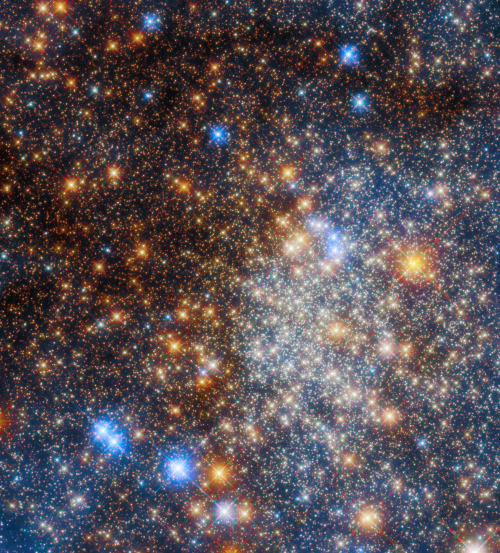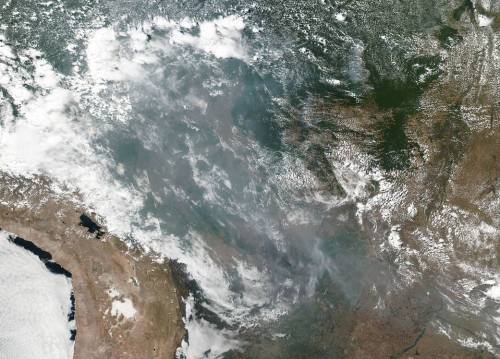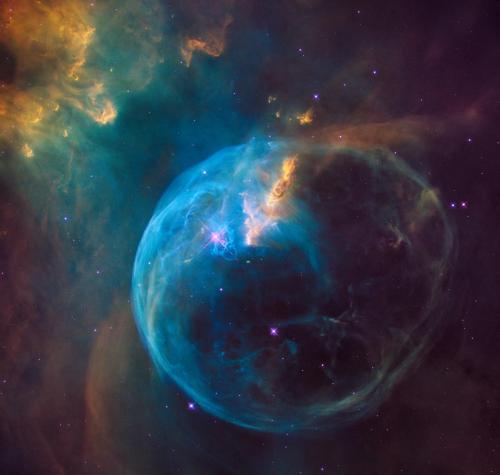A Total Lunar Eclipse Is Coming: 10 Things To Know
A Total Lunar Eclipse is Coming: 10 Things to Know
If you were captivated by August's total solar eclipse, there's another sky show to look forward to on Jan. 31: a total lunar eclipse!

Below are 10 things to know about this astronomical event, including where to see it, why it turns the Moon into a deep red color and more...
1. First things first. What's the difference between solar and lunar eclipses? We've got the quick and easy explanation in this video:
2. Location, location, location. What you see will depend on where you are. The total lunar eclipse will favor the western U.S., Alaska, Hawaii, and British Columbia on Jan. 31. Australia and the Pacific Ocean are also well placed to see a major portion of the eclipse, if not all of it.

3. Color play. So, why does the Moon turn red during a lunar eclipse? Here's your answer:
4. Scientists, stand by. What science can be done during a lunar eclipse? Find out HERE.
5. Show and tell. What would Earth look like from the Moon during a lunar eclipse? See for yourself with this artist's concept HERE.
6. Ask me anything. Mark your calendars to learn more about the Moon during our our Reddit AMA happening Monday, Jan. 29, from 3-4 pm EST/12-1 pm PST.

7. Social cues. Make sure to follow @NASAMoon and @LRO_NASA for all of the latest Moon news leading up to the eclipse and beyond.
8. Watch year-round. Can't get enough of observing the Moon? Make a DIY Moon Phases Calendar and Calculator that will keep all of the dates and times for the year's moon phases right at your fingertips HERE.

Then, jot down notes and record your own illustrations of the Moon with a Moon observation journal, available to download and print from moon.nasa.gov.
9. Lesson learned. For educators, pique your students' curiosities about the lunar eclipse with this Teachable Moment HERE.
10. Coming attraction. There will be one more lunar eclipse this year on July 27, 2018. But you might need your passport—it will only be visible from central Africa and central Asia. The next lunar eclipse that can be seen all over the U.S. will be on Jan. 21, 2019. It won't be a blue moon, but it will be a supermoon.
Make sure to follow us on Tumblr for your regular dose of space: http://nasa.tumblr.com.
More Posts from Nasa and Others
What’s Up for October?

This month is filled with exciting celestial sights. Here are 10 targets you can view this month:
10. Unusual Sunset

During a sunset, our thick atmosphere absorbs most colors of sunlight, but red light is absorbed the least. Rarely, green flashes can be seen just above the sun’s edge. As the last sliver of the disk disappears below the horizon, be sure to watch its color.
9. Belt of Venus

Just after sunset, turn around and face east. A dark shadow will move up from the horizon and gradually cover the pinkish sky. This is caused from the Earth itself blocking the sunlight and is called the Earth Shadow or the Belt of Venus.
8. Crepuscular Rays

Also just after sunset, or before dawn, you may see rays of sunlight spread like a fan. These are called crepuscular rays and are formed when sunlight streams through gaps in the clouds or mountains.
7. Aurora Borealis

The northern lights, also known as the aurora borealis, are caused by collisions between gaseous particles in Earth’s atmosphere and charged particles released from the sun. The color of the lights can changed depending on the type of gas being struck by particles of solar wind. You can find out when and where to expect aurorae at the Space Weather Prediction Center.
6. Andromeda Galaxy

Did you now that The Andromeda Galaxy is one of the few you can actually see with your naked eye? In October, look nearly overhead after sunset to see it! This galaxy is more than twice the apparent width of the moon.
5. Moon Features

Nights in mid-October are excellent for viewing the features on the moon. Areas like the Sea of Tranquility and the site of the 1969 Apollo 11 landing will be visible.
4. A Comet

This month, the European Space Agency’s Rosetta mission target, a comet with a complicated name (Comet 67P Churyumov-Gerasimenko), is still bright enough for experienced astronomers to pick out in a dark sky. On October 9, you may be able to spot it in the east near the crescent moon and Venus.
3. Meteor Showers

There are multiple meteor showers this month. On the 9th: watch the faint, slow-moving Draconids. On the 10th: catch the slow, super-bright Taurids. And on the 21st: don’t’ miss the swift and bright Orionids from the dust of Comet Halley.
2. Three Close Planets

On October 28, you’ll find a tight grouping of Jupiter, Venus and Mars in the eastern sky before sunrise.
1. Zodiacal Light

The Zodiacal light is a faint triangular glow that can be seen from a dark sky after sunset or before sunrise. What you’re seeing is sunlight reflecting off dust grains that circle the sun in the inner solar system. These dust grains travel in the same plane as the moon and planets as they journey across our sky.
For more stargazing tools visit: Star Tool Box
Make sure to follow us on Tumblr for your regular dose of space: http://nasa.tumblr.com
Taking the Vital Signs of Mars
Does Mars have quakes? What is the temperature of the Red Planet? How did Mars even form? What can it tell us about how other rocky planets formed?
The Mars InSight lander is scheduled to launch in May 2018 to search for the answers to those questions.

InSight (Interior Exploration using Seismic Investigations, Geodesy and Heat Transport) will conduct the first thorough “check-up” of Mars in more than 4.5 billion years, measuring its “pulse”, or seismic activity; its temperature; and its “reflexes” (the way the planet wobbles when it is pulled by the Sun and its moons).
How and Why?

By using sophisticated instruments – tools that can measure the vital signs of a planet – InSight will delve deep beneath the surface of Mars, detecting the clues left by the earliest stages of planetary formation.

Previous Mars missions have explored the surface history of the Red Planet. Mars has been less geologically active than Earth, so it retains a more complete record of its history in its core, mantle and crust. InSight will study the sizes, densities and overall structure of the Red Planet’s core, mantle and crust.

The lander will also measure the rate at which heat escapes from the planet’s interior, and provide glimpses into the evolutionary processes of all the rocky planets in our solar system, including Earth, and even those circling other stars!

Send Your Name to Mars!

You can send your name to Mars onboard the InSight lander! The deadline to get your Martian boarding pass is Nov. 1. To submit your name, visit: mars.nasa.gov/syn/insight
Learn more about Mars InSight HERE.
Make sure to follow us on Tumblr for your regular dose of space: http://nasa.tumblr.com.

Pumpkin space latte, anyone? ☕
Hubble captured this festive array of stars, Terzan 12, found in the Milky Way about 15,000 light-years from Earth. The stars in this cluster are bound together by gravity in a sphere-like shape and are shrouded in gas and dust. As the starlight travels through that gas and dust to Earth, blue light scatters, leaving the redder wavelengths to come through.
Download the full-resolution image here.
Make sure to follow us on Tumblr for your regular dose of space!

Ever want to ask a real life astronaut a question? Here’s your chance!
Astronaut Jeanette Epps will be taking your questions in an Answer Time session on Friday, May 5 from 10am - 11am ET here on NASA’s Tumblr. See the questions she’s answered by visiting nasa.tumblr.com/tagged/answertime!
NASA astronaut Jeanette J. Epps (Ph.D.) was selected as an astronaut in 2009. She has been assigned to her first spaceflight, which is scheduled to launch in May 2018. Her training included scientific and technical briefings, intensive instruction in International Space Station systems, spacewalk training, robotics, T‐38 flight training and wilderness survival training.
Before becoming an astronaut, Epps worked as a Technical Intelligence Officer at the Central Intelligence Agency (CIA).
Born in Syracuse, New York. Enjoys traveling, reading, running, mentoring, scuba diving and family.
She has a Bachelor of Science in Physics from LeMoyne College, as well as a Master of Science and Doctorate of Philosophy in Aerospace Engineering from the University of Maryland.
Follow Jeanette on Twitter at @Astro_Jeanette and follow NASA on Tumblr for your regular dose of space.
NASA’s 60th Anniversary: How It All Began
Congress passed the National Aeronautics and Space Act, on July 16 and President Eisenhower signed it into law on July 29, 1958. We opened for business on Oct. 1, 1958, with T. Keith Glennan as our first administrator. Our history since then tells a story of exploration, innovation and discoveries. The next 60 years, that story continues. Learn more: https://www.nasa.gov/60
Make sure to follow us on Tumblr for your regular dose of space: http://nasa.tumblr.com.
how can one work in nasa? it's my dream to work in nasa someday, right now, I'm just a high schooler but I've been planning out my trajectory so some advice and tips would be helpful.

Spotted: signs of a planet about 28 million light-years away 🔎 🪐
For the first time, astronomers may have detected an exoplanet candidate outside of the Milky Way galaxy. Exoplanets are defined as planets outside of our Solar System. All other known exoplanets and exoplanet candidates have been found in the Milky Way, almost all of them less than about 3,000 light-years from Earth.
This new result is based on transits, events in which the passage of a planet in front of a star blocks some of the star's light and produces a characteristic dip. Researchers used our Chandra X-ray Observatory to search for dips in the brightness of X-rays received from X-ray bright binaries in the spiral galaxy Messier 51, also called the Whirlpool Galaxy (pictured here). These luminous systems typically contain a neutron star or black hole pulling in gas from a closely orbiting companion star. They estimate the exoplanet candidate would be roughly the size of Saturn, and orbit the neutron star or black hole at about twice the distance of Saturn from the Sun.
This composite image of the Whirlpool Galaxy was made with X-ray data from Chandra and optical light from our Hubble Space Telescope.
Credit: X-ray: NASA/CXC/SAO/R. DiStefano, et al.; Optical: NASA/ESA/STScI/Grendler
Make sure to follow us on Tumblr for your regular dose of space!
@dasandwichguy: What precautions do you take to curb the effects of weightlessness?

Fires in the Amazon Rainforest
This natural-color image shows smoke from fires in the Amazon rainforest spreading across several states within Brazil, including Amazonas, Mato Grosso, and Rondônia. The image was collected by our VIIRS (Visible Infrared Imaging Radiometer Suite) instrument aboard the Suomi NPP satellite (a joint-partnership between NASA and the National Oceanic and Atmospheric Administration) on August 20, 2019. It’s not unusual to see fires in Brazil at this time of year, but activity in the country’s largest state, Amazonas, has been above average. Many people use fire to maintain farmland and pastures or to clear land for other purposes.
Credits: NASA Worldview, Earth Observing System Data and Information System (EOSDIS).
Make sure to follow us on Tumblr for your regular dose of space: http://nasa.tumblr.com.
-
 jaero liked this · 1 year ago
jaero liked this · 1 year ago -
 z3nko-kitsune liked this · 1 year ago
z3nko-kitsune liked this · 1 year ago -
 begile5 liked this · 1 year ago
begile5 liked this · 1 year ago -
 asliceofpumpkinpie liked this · 3 years ago
asliceofpumpkinpie liked this · 3 years ago -
 jayjer96 liked this · 4 years ago
jayjer96 liked this · 4 years ago -
 vacantwatchers reblogged this · 4 years ago
vacantwatchers reblogged this · 4 years ago -
 ladybugsonfire liked this · 4 years ago
ladybugsonfire liked this · 4 years ago -
 automaticdestinytrash reblogged this · 4 years ago
automaticdestinytrash reblogged this · 4 years ago -
 ninomeira liked this · 4 years ago
ninomeira liked this · 4 years ago -
 thevampirecat liked this · 4 years ago
thevampirecat liked this · 4 years ago -
 r3tr0grad3 liked this · 5 years ago
r3tr0grad3 liked this · 5 years ago -
 jasmiine-ann liked this · 5 years ago
jasmiine-ann liked this · 5 years ago -
 doodles-and-oodles liked this · 5 years ago
doodles-and-oodles liked this · 5 years ago -
 noorhb reblogged this · 5 years ago
noorhb reblogged this · 5 years ago -
 abyss-howl reblogged this · 5 years ago
abyss-howl reblogged this · 5 years ago -
 icarus-ornithoptery reblogged this · 5 years ago
icarus-ornithoptery reblogged this · 5 years ago -
 valengory1234 liked this · 5 years ago
valengory1234 liked this · 5 years ago -
 pheonixfidelity liked this · 5 years ago
pheonixfidelity liked this · 5 years ago -
 atbman07 liked this · 5 years ago
atbman07 liked this · 5 years ago -
 odtokgfbhipi liked this · 5 years ago
odtokgfbhipi liked this · 5 years ago -
 tipsorina reblogged this · 5 years ago
tipsorina reblogged this · 5 years ago -
 babymoongoat liked this · 5 years ago
babymoongoat liked this · 5 years ago -
 seperatestyle liked this · 5 years ago
seperatestyle liked this · 5 years ago -
 power-puffer-gurl reblogged this · 5 years ago
power-puffer-gurl reblogged this · 5 years ago -
 selecuri2002 liked this · 5 years ago
selecuri2002 liked this · 5 years ago -
 sllyrabbit liked this · 5 years ago
sllyrabbit liked this · 5 years ago -
 animatedbooklover liked this · 5 years ago
animatedbooklover liked this · 5 years ago -
 quanblovk liked this · 5 years ago
quanblovk liked this · 5 years ago -
 space2wanders liked this · 5 years ago
space2wanders liked this · 5 years ago -
 space2wanders reblogged this · 5 years ago
space2wanders reblogged this · 5 years ago -
 intuitivealchemy liked this · 5 years ago
intuitivealchemy liked this · 5 years ago -
 i-will-keep-on-ramblin liked this · 5 years ago
i-will-keep-on-ramblin liked this · 5 years ago
Explore the universe and discover our home planet with the official NASA Tumblr account
1K posts
